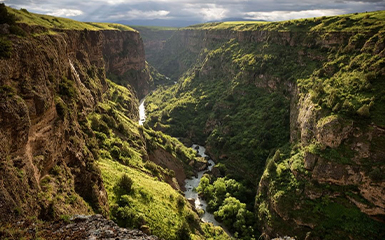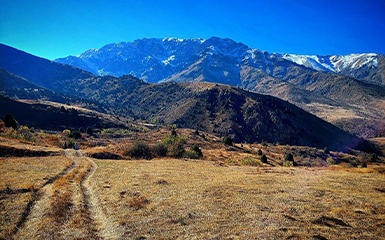Aisha-Bibi mausoleum
Aksu-Zhabagly
Aktau
Almaty
Altyn-Emel
Arystan Bab
Atyrau
Azret Sultan
Babaji Khatun
Bayanaul
Begazy necropolis
Beket-Ata Mosque
Almaty Lake
Lake Burabay
shakpak-ata-cave
Charyn Canyon
Hilvet mosque
Hodja Ahmad Yesevi
Holy Cave
Kaindy
Kapchagay
Karakhan mausoleum
Karkaraly
Kizhel Kensh
Kolsai Lakes
Korgalzhyn
Balkash lake
Lake Shaitankol
Jochi Khan
Karasai and Agyntai Batyr
Kozy Korpesh and Bayan Sulu
Mashkhur Zhussip Kopeyuly
Rabiga Sultan Begim
Kenty-Baba
Nomad Fortress
Nur-Sultan
Ruins of Otrar
Ruins of Sauran
Shopan-Ata
Shymbulak
Sultan-Epe
Tamgaly Gorge
Tamgaly-Tas
Alasha Khan
Torysh
Zhirensakal Peak
Aksu-Zhabagly nature reserve is the oldest and most famous nature reserve in Central Asia. Its foundation year is 1926. Its purpose was to protect endangered wild animals and the abundant flora and fauna of the reserve. The nature reserve is located in the spurs of the Western Tien Shan at an altitude of between 1000 and 4280 meters above sea level. In 2016, the nature reserve was included in the UNESCO World Biosphere Reserves list. The highest peak is Sairam Peak; its height is 4238 meters.
The name Aksu-Zhabagly includes the names of the two main rivers, Aksu and Zhabagly. These rivers flow through the reserve. Aksu is the longest river, covering 120 kilometres. Aksu River is blue in spring. However, in the summer, it turns into a milky colour. Hence, its name comes from Ak meaning “white” and Su meaning “water”. The Aksu canyon, carved by the mighty Aksu River, is one of the deepest canyons in Central Asia. The depth of the canyon fluctuates from 300 meters to 500 meters; its length is 30 km.
At an altitude of 3200 meters above sea level, there is another symbol of the protected area, Mount Kashkabulak. The mountain is decorated with petroglyphs. There are pictures of wild and domestic animals, hunting scenes and the lives of ancient people on the wall.
Aksu-Zhabagly is the richest treasure of endangered and endemic animal species. In addition, there are about 173 species of herbaceous plants. In addition, about 60 species of mammals live in the reserve zone. Namely, rare animal species such as argali, mountain goat, maral, stone marten and muskrat. Lots of birds live here. 11 bird species and 11 reptile species live in the reserve, such as the Golden Eagle and Harrier Eagle. One of them is the legless Yellow-Legless Lizard listed in the Red Book. The emblem of the reserve is the tulip Greig, whose petals of a rare crimson colour reach a length of 15 cm.
The views of the Kishi-Kayindy valley are beautiful; the path you will walk partly passes through the juniper forest, while more rocky slopes represent the other side of the valley. The entire route is about 7km in one direction, but you will not notice the full distance covered because of the amazing views. At the end of the trekking route, we will reach the Kishi-Kayindy waterfall where we will have a picnic with pre-prepared lunch boxes.
In May, mountain goats come down to the waterfall to give birth to their young. Steep landing reliably protects the offspring from predators. Tourists are not allowed to enter here during this period.
There is a clean mountain stream a little above; the water in it is very clean and suitable for drinking. All this time ago you will be a beautiful wide valley of Kishi-Kaindy on steep slopes where you can watch the change of plant belts, from high-altitude junipers to alpine grasslands. The canyon is beautiful any time of the year.


